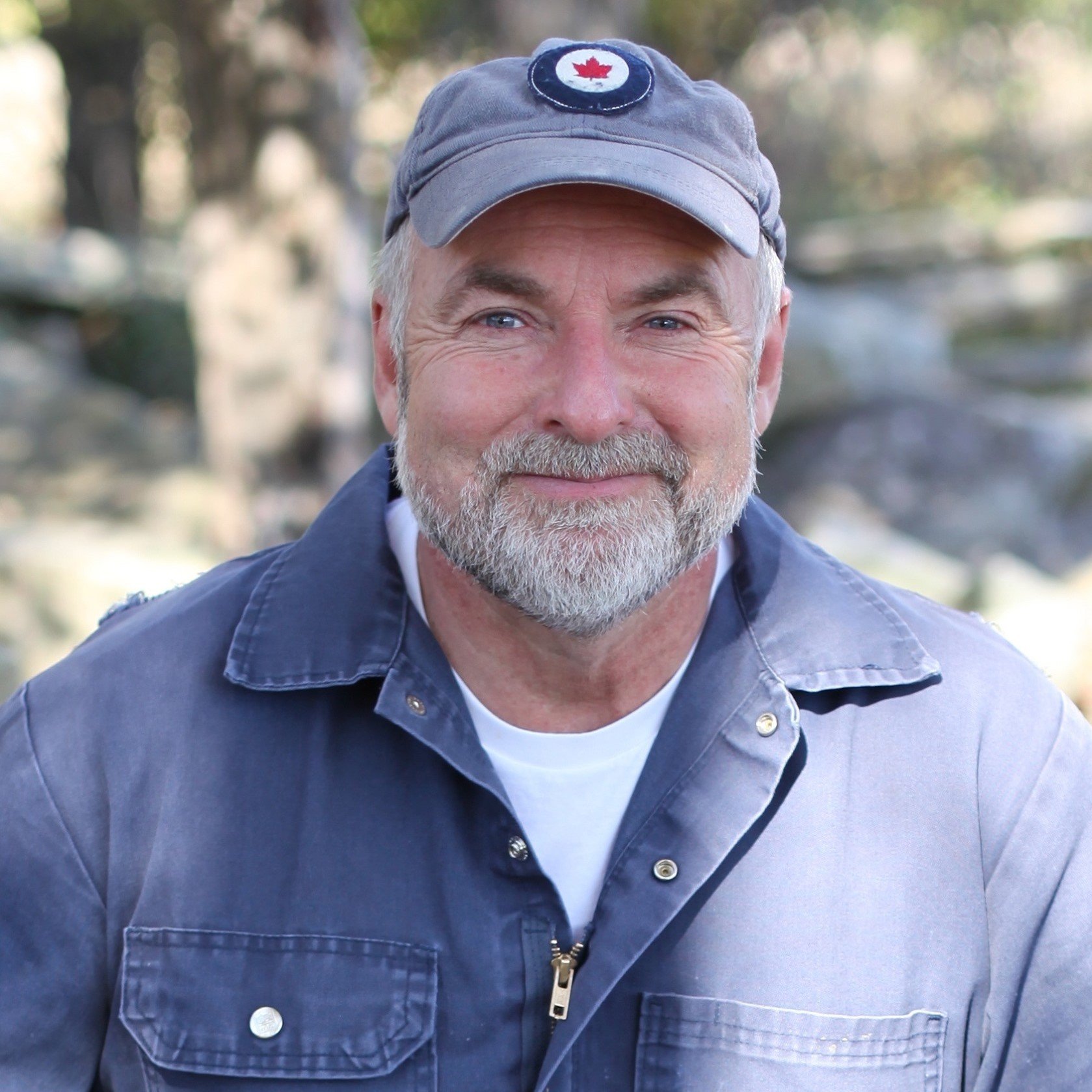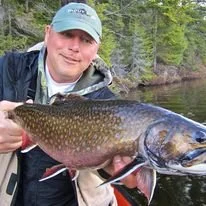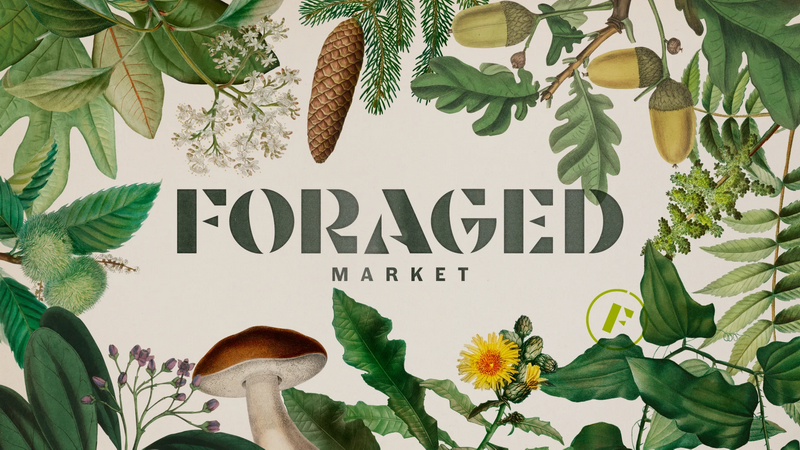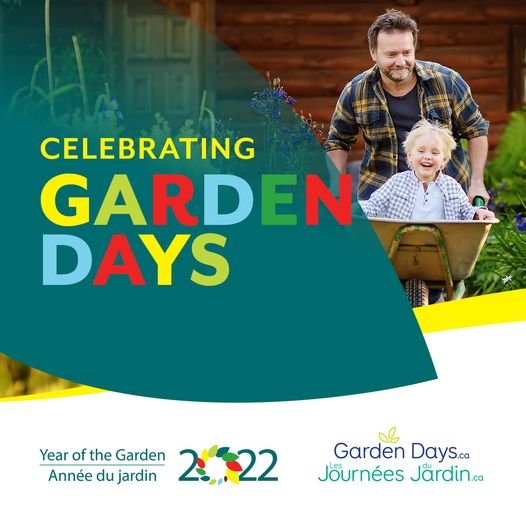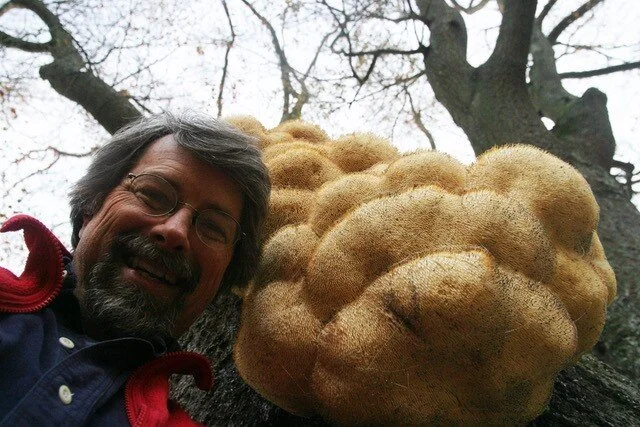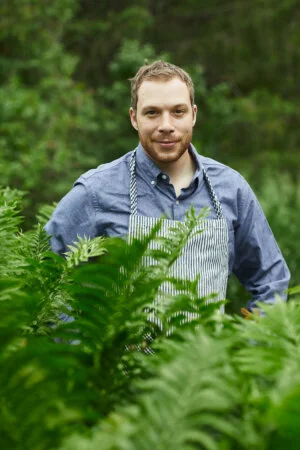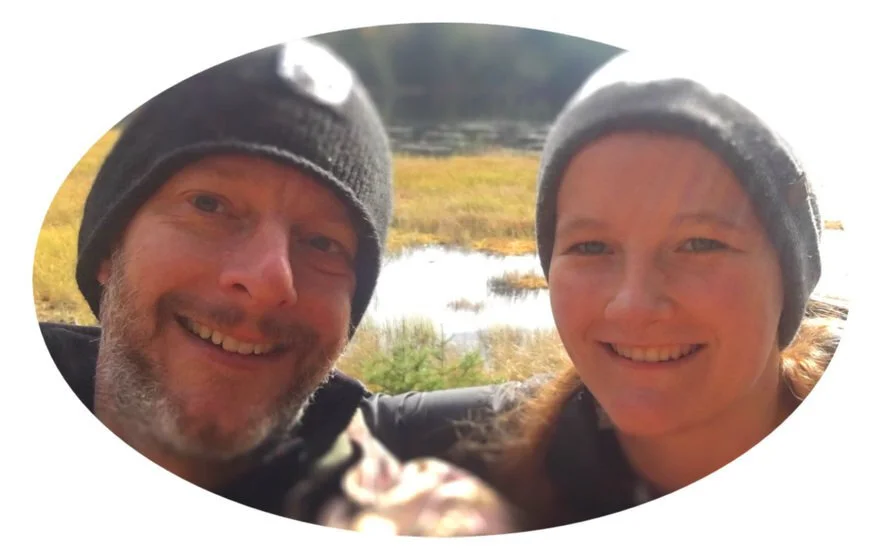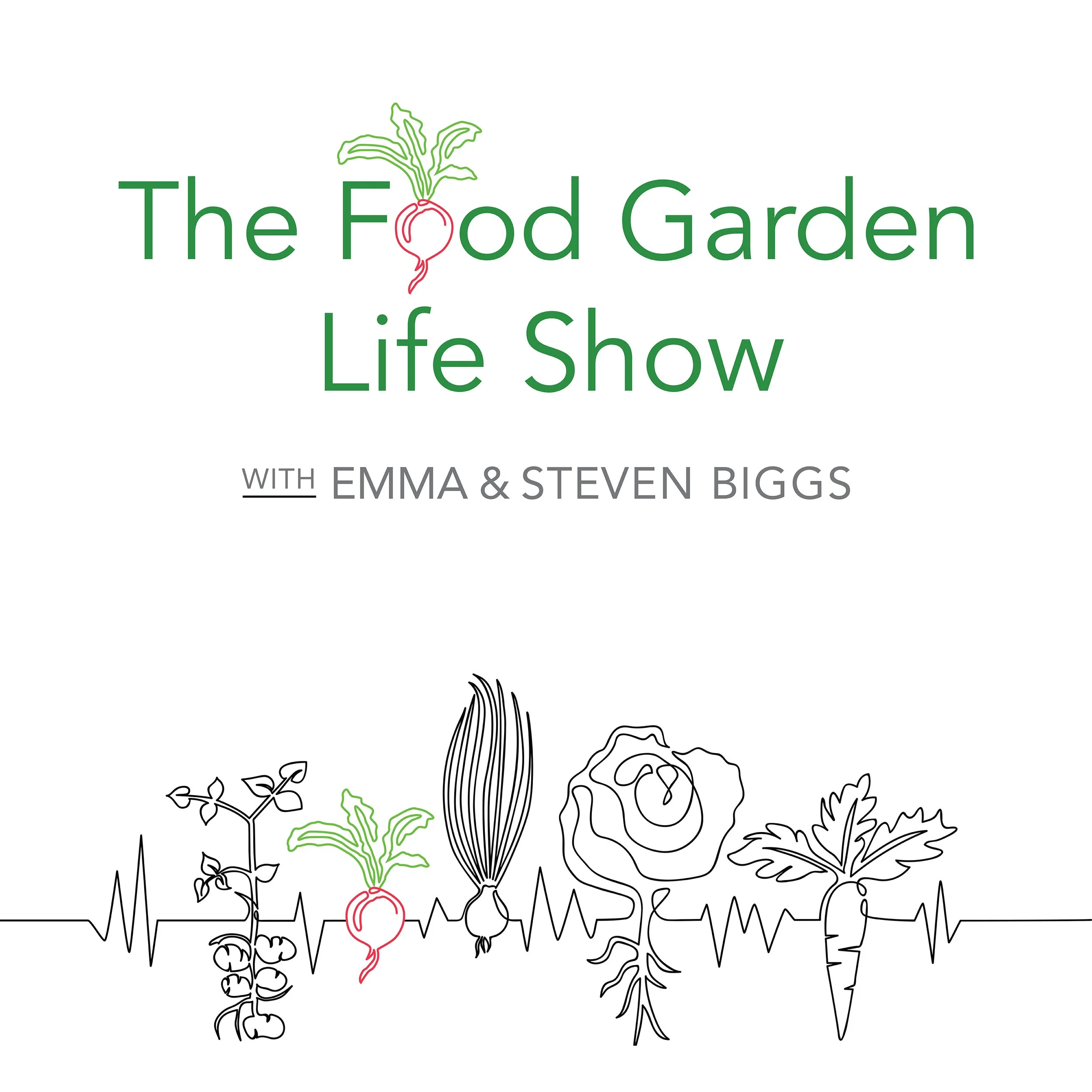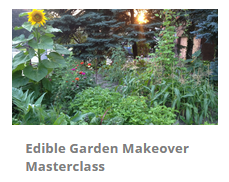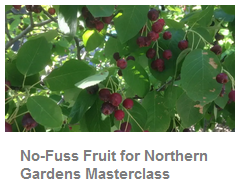Outstanding Oregano + What to Produce Besides Crops on a Homestead
Growing great oregano, and ways to earn income on a homestead beyond crops and livestock.
Oregano that Tastes Like Oregano!
We find out how to grow great Oregano with Dave Hanson from The Grow Guide Podcast.
(No more bland oregano that tastes like...hay!)
Why Now is a Great Time to Homestead
Homesteader Steve Maxwell talks about his journey from suburban Toronto to a rural homestead on Manitoulin Island.
He tells us why he think there's more opportunity than ever for homesteaders today.
Steve shares his ideas about homesteading opportunities here.
Garlic-Infused Vodka and a Cricket Rodeo
In this episode: Growing and cooking garlic, and the Toronto Garlic Festival with Peter McClusky, and chicken-keeping tips and ideas from Frank Hyman, author of Hentopia.
Talking about growing and cooking with garlic, with Peter McClusky, founder of The Toronto Garlic Festival.
Toronto Garlic Festival
In the first part of the show, we chat with Peter McClusky about garlic. He’s the founder of the Toronto Garlic Festival, now in its 12th year.
We chat about:
The hardneck garlic grown in Ontario, and it’s culinary properties
How to grow garlic at home
The festival, which includes seed garlic, prepared food, educational events, and music.
The festival is Sunday, September 25, 2022 at Wychwood Barns, 601 Christie St. here in Toronto.
Backyard Hens get Hentopia
Frank Hyman, author of Hentopia, talks about backyard hens.
In the second part of the show we talk about backyard hens with Frank Hyman, author of the book Hentopia.
Hyman’s approach to keeping chickens is that he aims to spend less time doing chicken-related chores than cooking eggs. And he sets up the coop so that he can go away for a couple of weeks at a time.
He tells us about:
Practical feed and feeder ideas
Creating practical water dispensers — even in cold climates
Making a pallet coop
(Spoiler alert: we hear about the cricket rodeo he gives his hens)
Trailer Video for Hentopia
Tales of Polar Bears and Brook Trout
Mike Borger from Canada Fishing Guide talks about adventures in pursuit of brook trout, and shares fishing tips.
Talking about brook trout and fishing with Mike Borger from Canada Fishing Guide.
Time Outdoors…and Trout
You probably never expected to hear about polar bears on The Food Garden Life Show.
Today’s show is a bit of a departure from our usual focus on plants. We continue with our focus on food, the outdoors, and the human story.
Time Outdoors…and Family
Mike Borger, lived some of his younger years as a self-described canoe bum, travelling northern waters in pursuit of brook trout. Today, he helps people plan trips to remote fishing destinations through his business Canada Fishing Guide.
We learned of Mike Borger when a friend sent us a link to a video of a great family trip: A Dad who takes his 10-year-old son on a spring brook-trout fishing trip into Algonquin Park – and they get the mother lode of fish.
In today’s show, my son Quinn, an avid angler, joins in our chat with his fishing questions.
We talk about:
Travelling northern canoe routes (and a polar bear encounter!)
Mike’s passion for brook trout
His epic brook trout fishing trips to Algonquin Park with his son, Brendan
Favourite tackle
Reading a lake when fishing for brook trout
Tips for new anglers
How he created a business doing what he loves
Connect
Canada Fishing Guide: canadafishingguide.net
Seasonal Garden Tips + Wild and Specialty Foods
In this episode: Seasonal tips with Joanne Shaw and Matthew Dressing; and foraging and specialty foods with Jack Hamrick.
Talking about seasonal gardening activities with Joanne Shaw and Matthew Dressing from Down the Garden Path.
Summer in the Garden
In the first part of the show, we chat with landscape designers Joanne Shaw and Matthew Dressing, hosts of the Down the Garden Path radio show and podcast.
We talk about:
Seasonal gardening tips
What to do in the garden now
Their new book, Down the Garden Path
Foraged
In the second part of the show we talk about unique foods, foraging, and turning your passion into a career with Jack Hamrick from Foraged.
Jack Hamrick from Foraged talks about specialty foods and connecting foragers and specialty producers with consumers.
He tells us about:
How a chat with a forager and some Chicken of the Woods mushrooms set him on the path to creating an online marketplace for foraged and specialty foods
The journey of building a business
Top tips to get started with a food business
Unique foods he loves on Foraged
The Garden Life and Mud Pies
Michel Gauthier and Cheney Creamer talk about living the garden life and The Year of the Garden.
Year of the Garden
2022 is The Year of the Garden here in Canada.
This year of celebration includes lots of ideas to help people weave gardens and gardening into their lives.
We chat with Michel Gauthier and Cheney Creamer about their weekly Year of the Garden invitations that offer people something simple to do in the garden.
Gauthier is the executive director of the Canadian Garden Council. Creamer is the chair of the Canadian Horticultural Therapy Association.
Anything that slows us down has to be good for us.” Michel Gauthier
Live the Garden Life
How do you weave gardening into your life?
Tell them about it by sharing your garden and what you love about gardening, and use the hashtag #yearofthegarden.
Natural Beekeeping
Common Sense Natural Beekeeping with Kim Flottum and Stephanie Bruneau.
Beekeeping with a bees-eye view.
Our guests today help us explore bee-friendly beekeeping techniques.
Lessons from the way bees live in the wild
Management strategies that respect the functioning of bee hives
Hive design elements that promote colony health and resilience
Common Sense Natural Beekeeping
Kim Flottum is editor emeritus of Bee Culture magazine. He teaches beekeeping courses, lectures on beekeeping, and writes about beekeeping and the business of bees. He also hosts the Beekeeping Today and Honeybee Obscura podcasts.
Stephanie Bruneau is a beekeeper, herbalist, and artist. She runs The Benevolent Bee, where she sells honey and bee-related products. She lectures on bees and bee-derived products.
In their new book, Common Sense Natural Beekeeping, they explore ways to keep bees while minimizing human intervention.
Making Change One Garden at a Time
Emily Murphy talks about gardening for community, health, and the environment; and Sunday Harrison talks about making change through urban school gardens.
Sunday Harrison from Green Thumbs Growing Kids talks about urban school gardens. Author Emily Murphy talks about her new book Grow Now.
Grow Now
Emily Murphy believes individual gardeners doing small things can add up to big change.
Murphy is a garden designer, educator, and author with a background that includes botany, ethnobotany, environmental science, and ecology. It gives her a unique vantage point to teach people about gardening and the environment.
Murphy is the creator of the website passthepistil.com, and author of Grow What You Love, 12 Food Plant Families to Change Your Life.
She shares ideas from her new book is Grow Now: How we can save our health, communities, and plant – one garden at a time. In it, Murphy looks at how individual gardeners can make change positive change in the world.
Green Thumbs Growing Kids
Sunday Harrison gets city kids gardening. She’s with Green Thumbs Growing Kids, which gives hands-on garden and food education to urban school kids.
Along with school gardens, she talks about microgreens, a fast maturing crop for kids. And a new project is kids growing trees from seed — trees that will line Toronto streets.
Since Harrison joined us on the show a year ago to talk about school gardens, demand for school gardens has been huge.
How to Forage for Mushrooms without Dying
Frank Hyman talks about how to forage for mushrooms.
Mushroom identification can be daunting for beginners, with Latin names and spore prints used to differentiate hard-to-identify mushrooms.
In his new book, How to Forage for Mushrooms without Dying: An Absolute Beginners Guide to Identifying 29 Wild Edible Mushrooms, Frank Hyman focuses on edible mushrooms that are easy to identify.
Easy-to-Identify Edible Mushrooms
Hyman suggests starting with easy-to-identify mushrooms when learning to forage — mushrooms that can easily be distinguished from non-edible ones.
Here are some of the mushrooms that he talks about in this episode:
Chicken of the Woods. “It will look like a pizza sticking our of a tree.”
Morel. Easy to distinguish from the non-edible false morel because the entire interior is hollow when sliced in half from top to bottom (the false morel has chambers within it.)
Black Trumpet (a.k.a. Horn of Plenty). These mushrooms, which look like little bugles, are hollow tubes. Pick it up and look through it length-wise, as if it were a telescope.
Giant Puffball. Slice in half to see that the interior is solid white. “If it’s white like a piece of tofu, you’re good to go,” says Hyman. If you see the outline of a mushroom within, or if it’s not white — don’t eat it.
More than Dinner
Hyman points out that along with the culinary uses of foraged mushrooms, there’s another reason people might consider foraging: It’s a fun outdoor activity; it’s time outdoors, in nature.
Backyard Chickens
Hyman is also the author of the book Hentopia: Create a Hassle-Free Habitat for Happy Chickens; 21 Innovative Projects.
Here is a video in which he talks about backyard chickens.
Coppices, Alcoholic Hedges, and Thoughts on Ecological Gardening
Matt Rees-Warren on ecological gardening, coppices, hedgerows, and schythes
Matt Rees-Warren talks about ecological gardening, scythes, coppicing, hedgerows — and pleachers.
Where is the sweet spot that gardening meets the natural world…so that gardening is ecological? Our guest today explains that ecological gardening is all about balance.
Matt Rees-Warren says, “Your garden is a pocket of wild; it will never be purely wild, because it’s an interaction between ourselves and nature. But it can be much more regenerative.”
Rees-Warren is a professional gardener and garden designer who’s passionate about the difference that individual gardeners can make to strengthen biodiversity and lessen environmental degradation.
He says gardening is one way individuals can make a tangible difference to the environment. Don’t wait for governments to act, he says. Start making changes now, in your own garden.
Rees-Warren is the author of The Ecological Gardener: How to Create Beauty and Biodiversity From the Soil Up.
Ecological Gardening
“If we design our gardens to be regenerative, the result will be functional, beautiful spaces full of life and vigour, robust enough to face the challenges of the future and elegant enough to beguile all those who walk among them,” says Rees-Warren.
But ecological gardening is more than a philosophy. There are many practical things we can do in the garden.
Here are some of the ideas discussed:
Coppicing. Talking about renewable materials for the garden, Rees-Warren explains the process of coppicing, where trees are repeatedly cut back to the ground to give a harvest of sticks that can be used in the garden.
Scythe. He describes this as “the most immersive” of tools. “It’s the only tool for wildflower meadows,” he says.
Hedgrows. Rees-Warren says hedgerows can also be food reservoirs, using plants such as blackberry, sloe berry, hops, raspberry, and hazelnuts. On the mention of sloe gin, he adds that sometimes these are called, “alcoholic hedges.”
Pleachers. “Laying a hedgerow” and the technique of using “pleachers” is one way to create attractive hedgerows that are like a living fence. Young trees are cut leaving just a thread of bark connecting them to the stem, and then folded down horizontally. “It looks fabulous,” says Rees-Warren.
Sochan, Galinsoga, Squash Tips: Root-to-Flower Cuisine
Chef Alan Bergo talks about root-to-flower cooking and foraged ingredients.
Chef Alan Bergo talks about root-to-flower cuisine, foraging, and some unexpected flavours.
Our guest today, Chef Alan Bergo, looks at vegetables through the eyes of a forager. He’s passionate about using parts of the plant that are often overlooked.
Chefs using a whole animals might use the term nose-to-tail cooking. Bergo takes this approach with his vegetables, using a root-to-flower approach.
Bergo is the author of the new book, The Forager Chef’s Book of Flora: Recipes and Techniques for Edible Plants from Garden, Field, and Forest.
Often-Forgotten Plant Parts
Bergo talks about using squash tips in the kitchen. “The squash is a perfect example of how foraging and looking for different ingredients changed how I consider vegetables that I thought I knew,” he says.
His advice for cooking squash shoot tips? Cook gently and delicately. Steam them, or blanch for one minute…or barely wilt them in a pan.
Other often-forgotten plant parts include:
Fennel fronds. Bergo likes to combine these with parmesan cheese and bread crumbs to make into cakes.
Carrot leaves. He suggests simmering them in salted water. They keep their shape and texture when gently cooked, and can then be used like salad.
Unripe sunflower heads. They have the texture of an artichoke along with a strong sunflower flavour.
Foraged Ingredients
Sochan. Bergo explains that leaves from this rudbeckia family member can be harvest three to four times over a year. The leaves formed after the flower stalk dies back are different—and are his favourite. Older leaves have a stronger flavour.
Nettles. He finds that common nettle has more of a “saline” or “oceanic” taste than Canada nettle.
Milkweed flowers can be used to make drinks with an intensely fruity flavour.
Meadowsweet flowers have an almond-like taste. Bergo says that a good way to catch floral aromas is by using cream.
Black walnut. Young nuts can be used to make a jam and ketchup.
Pine pollen. It’s used in China and the Middle East to make sweets.
Thoughts on Flavour
Bergo talks about flavours that are shared amongst plants in the same families, recounting the time he served dolmas made using galinsoga leaves, only to have people ask him if they contained artichoke.
Another example of a shared flavour is the hint of almond that shines through in plum-kernal oil or Saskatoon berries.
Bergo’s Top Tips
Steaming greens keeps more flavour than blanching.
Try something new!
Foraging as an Outdoor Classroom
Foraging and outdoor education for children with Mike Krebill from Iowa
We chat with forager and a wild-food educator Mike Krebill in Iowa.
Krebill shares foraging tips, his insights into teaching, his approach to outdoor education—and stories from the years he spent teaching a grade seven elective course on foraging.
Krebill’s new book is A Forager’s Life: Reflections on Mother Nature and my 70+ Years of Digging, Picking, Gathering, Fixing and Feasting on Wild Edible Foods.
Foraging as an Elective
Krebill’s grade seven elective course about foraging was so popular that the school held a lottery to choose which students could take it.
Not a fan of having students read out loud from textbooks, Krebill included lots of hand’s on learning in the class, along with field trips on horseback, by canoe, by bike, and hikes around the neighbourhood.
Dandelion Doughnuts
One of the activities in the foraging class was making dandelion doughnuts—dandelion flowers fried in pancake batter.
While the flower petals are mild, the flower stalk and green portion of the flower are very bitter. Krebill demonstrated to his class the right way to consume the petals while leaving behind the green, bitter portion. (Unfortunately, when the class took the dandelion doughnuts around the school to feed to other teachers, this warning about the bitter portion wasn’t shared!)
Krebill says that students still get in touch to find out how to make dandelion doughnuts, so that they can do it with their own children.
Giant Puffball
In another class, student learned how to cook slabs of giant puffball to crispy, golden perfection.
Krebill explains the importance of finding the bottom of a puffball, and then cutting down the middle from top to bottom to look for indications of a stem or cap—which can indicate that it’s not a puffball…but is a poisonous type of mushroom.
A puffball has a black root-like structure at the bottom. If this has been removed, it’s still possible to find the bottom. Set the puffball on a counter and wait until it stops rolling. Like a flat tire, the bottom of a puffball is flat.
Sumac
Hands-on learning means not all in-class activities work the first time. Krebill says many students were interested in making sumac lemonade. It took 20 years of experimenting to get the sumac lemonade recipe just right.
The sumac berries, he explains, should be picked at the stage he describes as “super sour” — sour enough to cause you to squint your eyes, but then relax. One year his class made lemonade using sumac berries that were at a more sour stage. “The aftertaste would peel paint off metal,” he says with a laugh.
A Forager’s Life
Mike Krebill’s new book is, A Forager’s Life: Reflections on Mother Nature and my 70+ Years of Digging, Picking, Gathering, Fixing and Feasting on Wild Edible Foods.
He is also the author of, The Scout's Guide to Wild Edibles.
Weave Habitat Restoration into Food Gardens
Not Mutually Exclusive
Ever wondered if growing food and and growing native plants are mutually exclusive?
Our guest Ryan Godfrey talks about his sixth-floor balcony garden where he weaves together edible and native plants—all in containers.
Habitat-Themed Containers
Godfrey’s balcony container garden includes habitat-themed containers:
Alvar container garden
Riverside container garden
Boulder container garden
Woodland container garden
Edible plants include woodland strawberries, Jerusalem artichoke, sweet grass, and Virginia mountain mint.
Godfrey also has an allotment garden plot where he grows both food and native plants. He says that his plot draws a lot of pollinators.
It Started with Acorns
In a journey that started with vacuuming acorns as a child, Ryan went on to study biology and evolutionary biology. He says this makes him a “plant nerd,” a gardener who learned about plants outside of a garden context. It colours his approach to gardening.
“Failure is a huge part of gardening. I encourage folks to document and learn from your failures.” Ryan Godfrey
Godfrey currently works with World Wildlife Fund Canada on a project called In The Zone, an initiative to build Carolinean habitat in Canada.
Neighbourhood Foraging for the Wild Food Gourmet
Robin (Robert K.) Henderson, author of The Neighborhood Forager: A Guide for the Wild Food Gourmet
Robin Henderson joins us to talk about foraging.
As he was growing up, he heard family stories about the foraging of previous generations.
Then, as urban growth engulfed the area where he lived, he discovered the many edible plants growing in his own neighbourhood.
Henderson points out that many people think of “subsistence” foraging—foraging to fill the stomach. For him, foraging can be a lot more than subsistence—he’s a big believer in “gastronomic foraging.”
Henderson explains that it’s even possible to forage in winter, while there is snow on the ground.
Gourmet Ideas Include:
elderflower champagne
sumac lemonade
sorrel paste and sorrel soup
spruce beer
dandelion salads and dandelion root coffee
velvety lambs quarters
Grow a Food Garden You Love
Emily Murphy, Author of Grow What You Love
Emily Murphy finds daily inspiration in her garden in Northern California. She describes her passion for gardening as, “A love affair.”
Early Start
Emily got an early start in gardening. “If you were around in the 70’s, I was the kid down the road whose family was growing potatoes in her front yard instead of a lawn,” she says.
Teaching Gardening
Emily is a garden designer, educator, and author who weaves together her studies in botany, ethnobotany, environmental science, and ecology.
In her teaching she brings together gardening and living.
“Our gardens are one of our most immediate touch points with nature.”
Grow What You Love, by Emily Murphy
Emily is the author of the book Grow What You Love, 12 Food Plant Families to Change Your Life, an inspiring guide to planning, making, and growing a garden.
Gardens and Healing
Stephanie Rose, author of Garden Alchemy and writer and blogger at GardenTherapy.ca.
Stephanie Rose has a passion for inspiring other people to grow and use plants. It’s a passion that began with her own journey of healing herself by taking up gardening.
“This is where I’m going to recover. I’m going to rehabilitate myself using the garden.”
Stephanie is a Vancouver-based award-winning author, speaker, and master gardener who teaches people how to grow and use plants. She weaves her knowledge of herbalism and permaculture into her work.
Using Gardens to Heal
Stephanie talks about her own journey of recovery as she began to garden.
A parent, she has a lot of ideas for parents who want kids to garden. In her own yard, she opted for a play garden instead of a plastic swing set. Her 6-year-old son says that he wants to be a master gardener: When she runs kids gardening events, he likes to lead groups of kids on scavenger hunts.
Garden blogger Stephanie Rose’s latest book, Garden Alchemy.
Garden Alchemy
Stephanie discusses ideas from her new book, Garden Alchemy, which is a guide for gardeners who want to make and do things themselves. The book covers a wide range of topics including fertilizers, soil amendments, sprays, and ideas to beautify the garden.
In the book she demystifies ingredients used to create soil and plant “elixirs.” There are recipes for homemade fertilizers, steps for building a compost pile, soil tests, and techniques for making foliar sprays.
“It’s a recipe book for your garden.”


